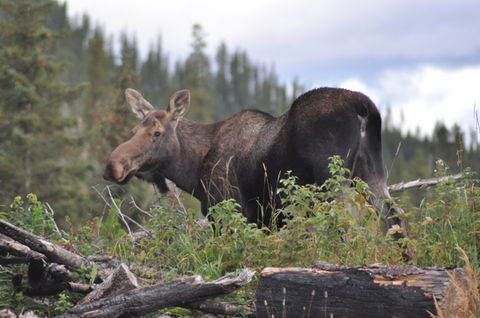
ABOUT
US

ABOUT US
The Rocky Mountain Trench Ecosystem Restoration Program has operated as a successful partnership of government, industry, First Nations, NGOs and the public since 1998. The long-term goal is to restore East Kootenay/Columbia Valley low-elevation grasslands and dry Ponderosa pine/Douglas-fir forests to their natural state. Restoration is taking place on Crown land, within provincial and national parks, on private conservation properties, and on First Nations reserves from Radium Hot Springs to the US border.
RESTORATION BENEFITS
-
Restoring grasslands and open forests brings benefits to plants, animals and people.
-
Restoration allows grasses, shrubs and other native plants to flourish. These plants provide forage and browse for domestic cattle, elk, deer and bighorn sheep.
-
Restoration of grasslands and open forests contributes to the region's rich biodiversity by providing habitat for a wealth of wildlife species, many of which are at risk because habitat has been lost or degraded.
-
Restoration improves forest health by spacing trees and it reduces the potential severity of wildfires by removing forest fuels.
-
Restoration benefits ranching, forestry, hunting, guide-outfitting, tourism, recreation and communities.
-
The ER Program is a significant factor in helping to sustain the East Kootenay's traditional way of life.
RESTORATION HOW-TO
-
Ecosystem restoration in the Trench involves a combination of industrial logging, machine thinning and hand slashing to remove excess trees from grassland and open forest sites.
-
Project sites are logged, machine thinned or hand slashed depending on the size, density and current commerical value of trees on site.
-
Trees can be sold as sawlogs, chipped for pulpwood, ground as hog fuel, piled and burned, or left scattered on the ground.
-
Tree removal is followed by prescribed burning to maintain grassland and open forest sites.
-
Prescribed burning controls tree regeneration and rejuvenates native grasses, shrubs and forbs.
-
Prescribed burns - sometimes called broadcast burns - mimic the frequent low-intensity fires that once burned in the Trench.
-
Grasslands and open forests are fire dependent - they are classified as fire-maintained ecosystems.
-
Restoration project sites on Crown land are planned by range unit and pasture within the Rocky Mountain Forest District. There are 48 range units containing a total of 300 pastures within the District. For a map, see Ecosystem restoration overview: range units & pastures Download PDF
OUR BLUEPRINT FOR ACTION
BLUEPRINT FOR ACTION 2013: PROGRESS AND LEARNINGS
A detailed review of the first 15 years of operation, Blueprint for Action 2013 is the Rocky Mountain Trench Ecosystem Restoration Program’s most comprehensive report to date.
The 52-page report covers:
• the ecological rationale for restoration of the region’s grasslands and open forests
• current and future strategies to achieve region-wide restoration
• restoration treatments and costs on Crown land, provincial and national parks, private conservation properties and First Nations reserves, and
• monitoring results from restoration projects.
COMPLETE REPORT
Blueprint2013_booklet_web.pdf (7.8MB)
An 4-page summary report is also available.
Blueprint2013_summaryweb.pdf (0.9MB)
GALLERIES
Wildlife trees (also known as snags) provide habitat for more than 70 British Columbia species of birds, amphibians and mammals - even bears! Prescriptions for ecosystem restoration treatments in the Trench always include measures to protect existing wildlife trees or to produce new ones. Learn about wildlife trees - what they mean to animals and how they can be created - in this photo presentation:
The rare Lewis's woodpecker, an at-risk species in BC, often nests in the same wildlife trees year after year. A favourite nesting location is right here in the East Kootenay. Learn about this interesting bird and what the ER Program is doing to protect its habitat in this photo story originally prepared for the 2010 Wings Over the Rockies birding festival:
OUR HEROS
WILDLIFE














































